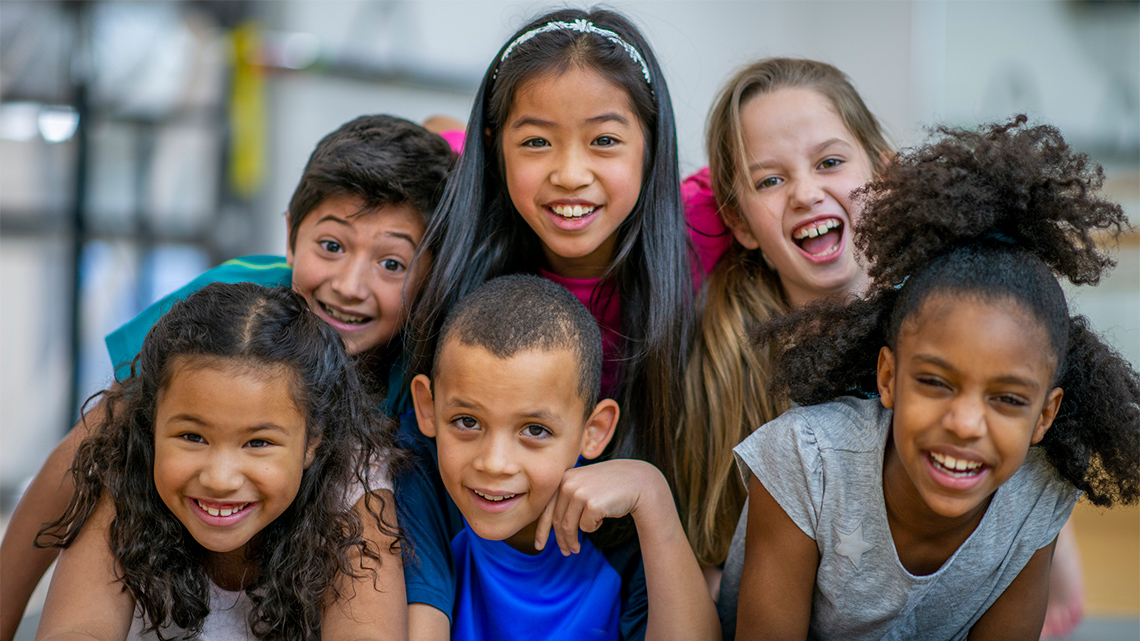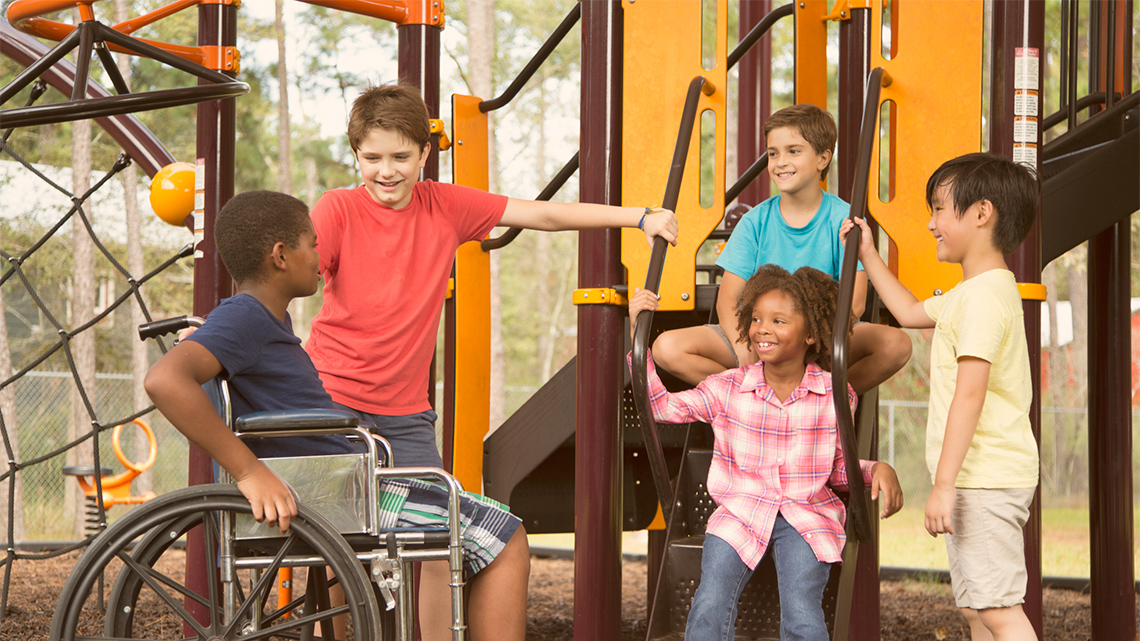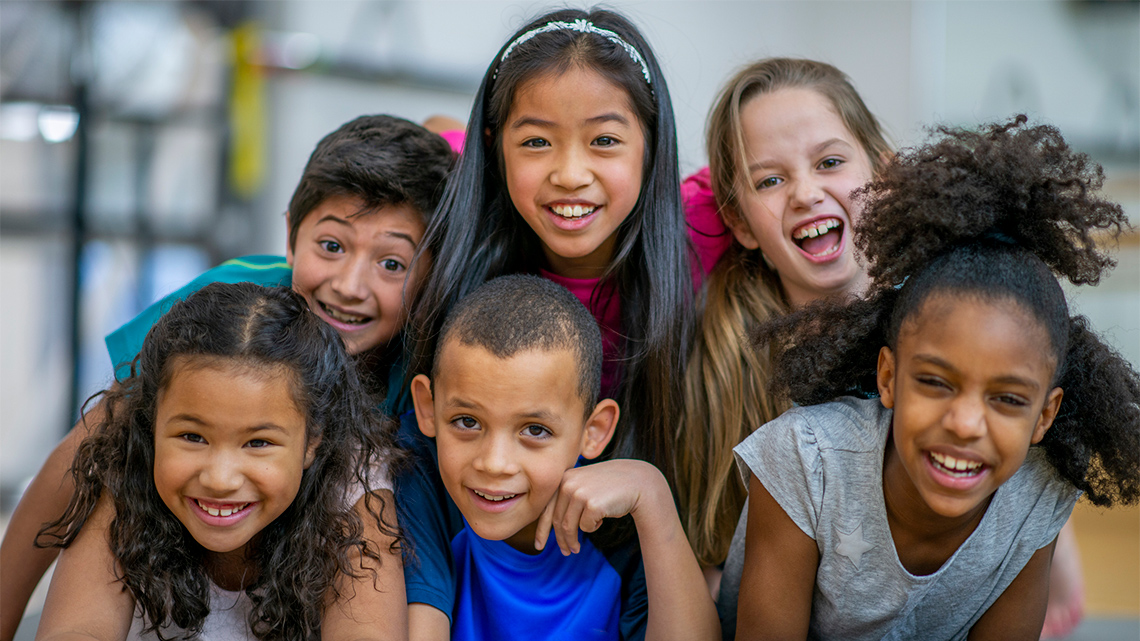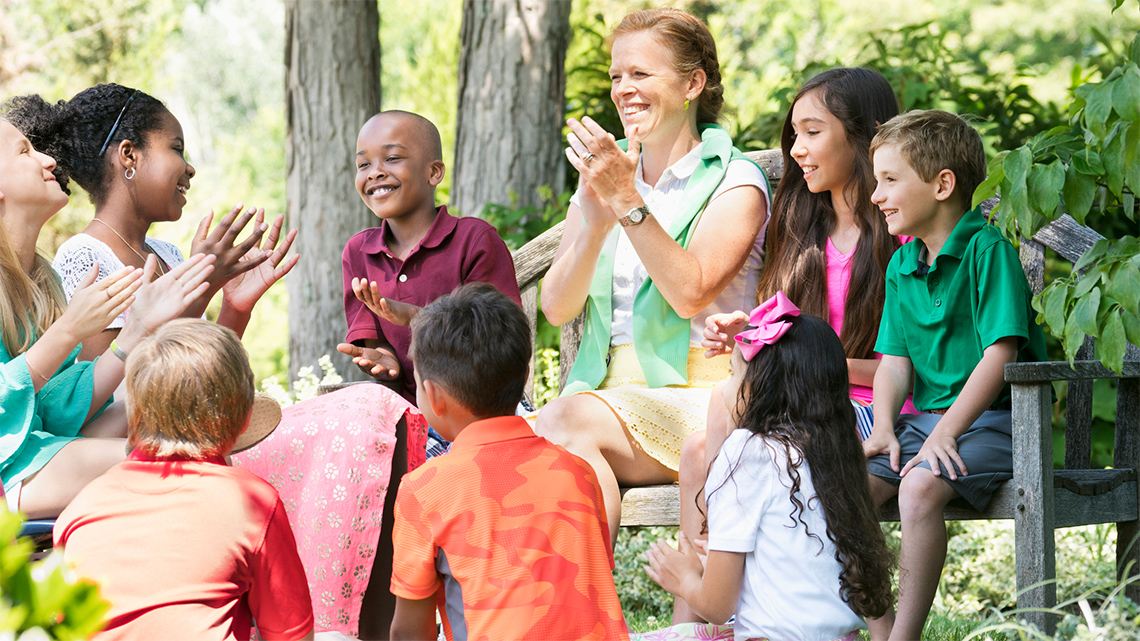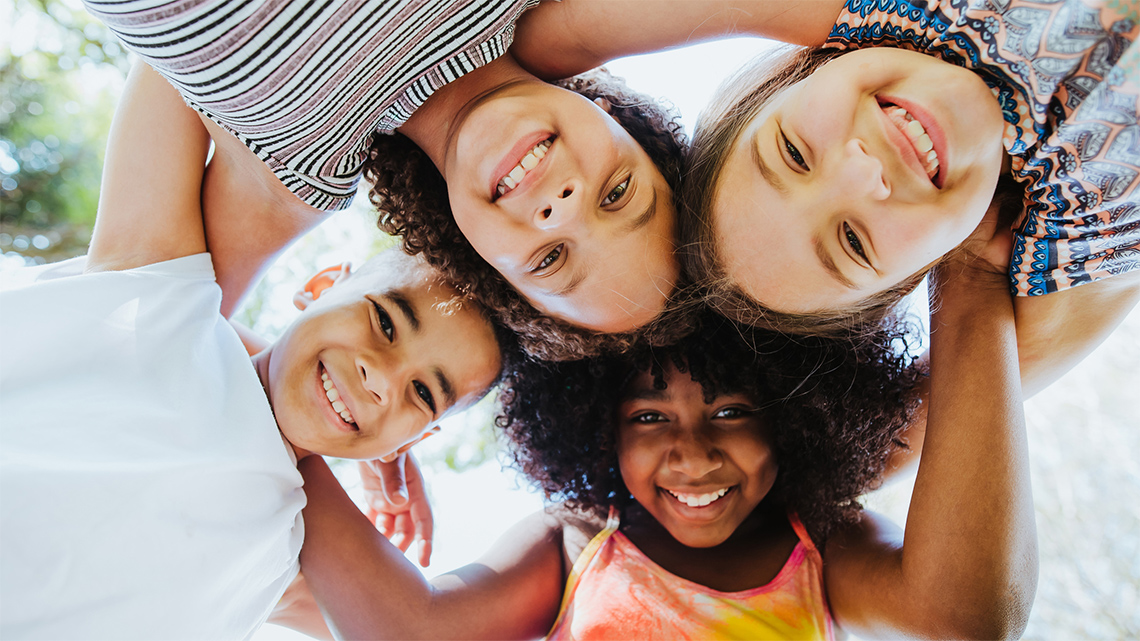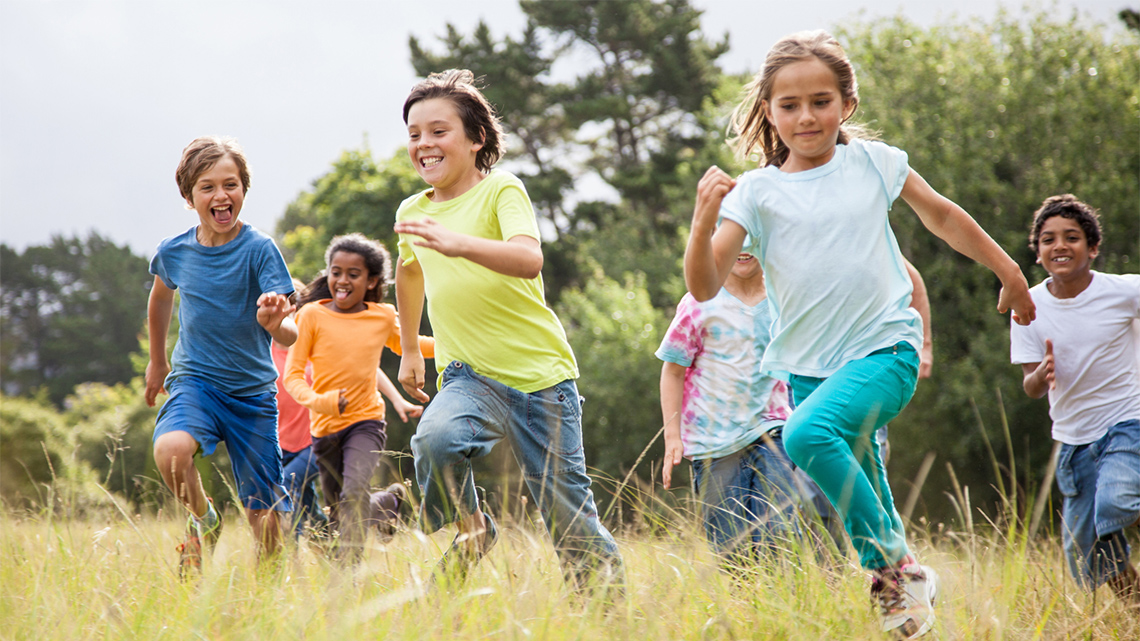Minds On
Relationships
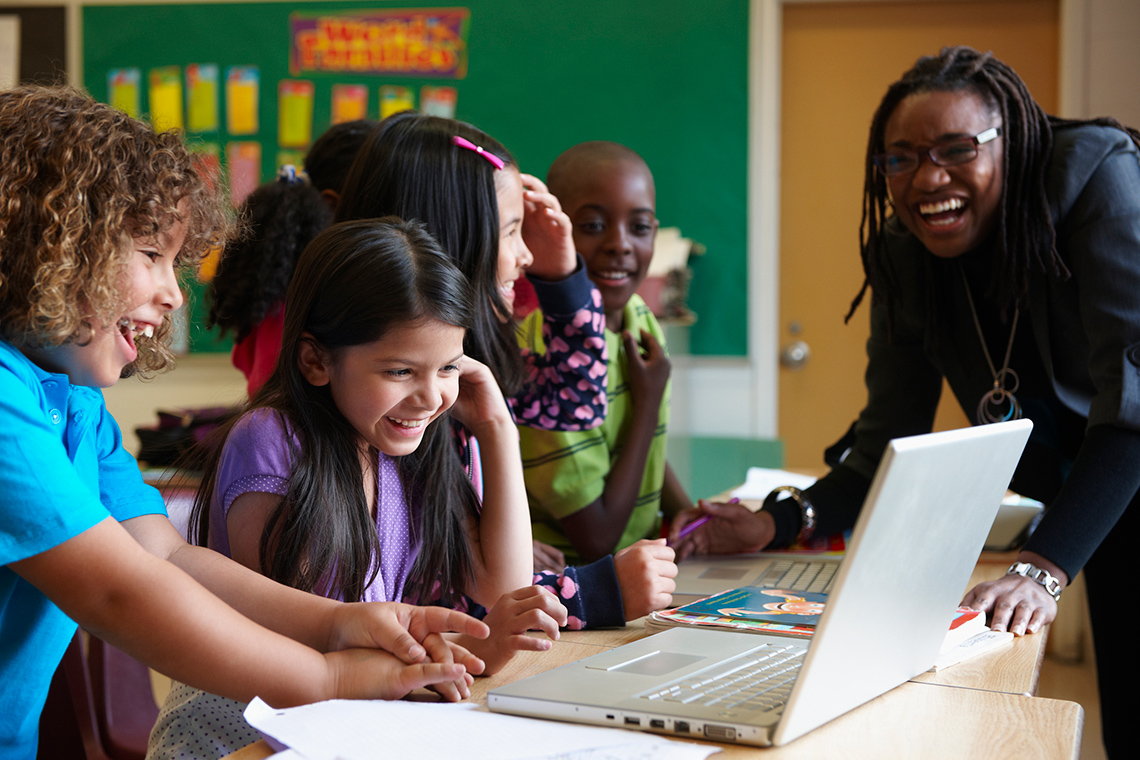
What is a relationship?
A relationship is a connection between people. We form relationships with family members, neighbours, teachers, and friends.
There are many benefits to relationships including:
- love
- companionship
- safety
- someone who is there for you
- someone to have fun with

Student Success
Think-Pair-Share
If possible, with a partner, brainstorm a few characteristics of a healthy relationship.
Press ‘Hint’ to explore details of a healthy relationship.
Everyone should feel respected and accepted in their relationships. They should feel that their thoughts and feelings are important.
Record your list on the computer, on paper, or in an audio recording.
Note to teachers: See your teacher guide for collaboration tools, ideas and suggestions.
Action
Healthy relationships

A healthy relationship is positive.
Everyone has different types of relationships in their lives – with peers, parents, siblings, extended family, and other trusted adults.
What do you think makes these relationships healthy?
Press ’Let’s Check!’ to access suggested answers.
Communication, trust, and respect all make relationships healthy.
Healthy relationships help us feel accepted, understood, and listened to. This is important for emotional development. These healthy relationships also help with a healthy body image because we know that others accept us for who we are.
What can you do if you’re having problems in a relationship? What behaviours can help to make it healthier?
Explore the following statements. Check the responses you think are correct.
If there are issues in a relationship…

Sometimes people have unhealthy relationships that bring challenges such as being treated unfairly, being bullied, or even feeling pressure to do things they are not comfortable with.
These possible responses can also help someone who is facing these challenges. It is important to tell a trusted adult and ask for help if these challenges happen.
What’s in a picture?
Let’s explore the following images. What do you notice?
Social Emotional Learning
Let’s think!
After exploring the images, record your thoughts on what you notice and wonder about each.
Press ’Hint’ to access a clue.
For each picture, consider their similarities and differences.
Complete the Notice and Wonder Chart in your notebook or using the following fillable and printable document. If you would like, you can use speech-to-text or audio recording tools to record your thoughts.
| Notice and Wonder Chart | ||
|---|---|---|
|
After exploring the images, record your thoughts on what you notice and think about each. |
||
|
Pictures |
What do you notice in this picture? |
What do you wonder about this picture? |
|
Picture A |
||
|
Picture B |
||
Press the ‘Activity’ button to access Notice and Wonder Chart.
We are unique

We all have things in common. We are all in grade three.
We also have things that are different about us.
Some of us have straight hair or curly hair. Some of us have short hair and some of us have long hair. Some of us have different celebrations and traditions. Some of us wear glasses. Some of us like to play an instrument.
We are all unique.
Press ’Unique’ to access what it means.
Unique is being the only one of its kind.
For example, each snowflake is unique.
About me
1. Let’s think about yourself.
- How would you describe yourself to others?
- How do you look? (hair type, tall or short, eye colour, and etc.)
- What are things you enjoy doing?
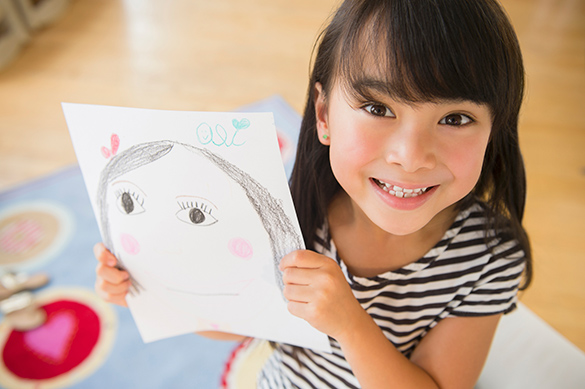
2. List your physical characteristics (how you look) and things you enjoy.
3. Create a drawing of yourself.
Complete the About Me Activity in your notebook or using the following fillable and printable document. If you would like, you can use speech-to-text or audio recording tools to record your thoughts.
| About Me Activity | |
|---|---|
|
List your physical characteristics (how you look) and things you enjoy. |
|
|
My physical characteristics |
Things I enjoy |
Press the ‘Activity’ button to access About Me Activity.
Consent
Consent means to give permission, and respecting each person’s space and boundaries.
For example, asking first before giving someone a hug.
Let’s check out the following images we previously explored.
If you notice, there are some children that are either sitting, standing, or laying down.
Think about how close they are to each other.
Would the child standing beside the child need permission to push the wheelchair?
Press ’Let’s Check!’ to access the answer.
Yes. To be respectful and safe, the child in the wheelchair would have to give consent.
Test Your Skills
Consent or not?
Explore the following statements and decide whether there needs to be consent for each.

Select the correct answer, then press “Check Answer” to see how you did.
Consolidation
What’s important?

Let’s think about the following questions:
- Why is it important to have trust, respect, and communication in a healthy relationship?
- How can we show that we care for and respect others?
- What could we do if we have an unhealthy relationship?
Record your ideas in a notebook or another method of your choice.
Create a poster
Create a message that can be placed around the community or a school.
1. Start your message with this statement: “A healthy relationship is…”
2. Design a digital or a physical poster with your message, and add or draw images.
3. Include strategies to help make a relationship healthier if there are problems.
4. Include information about how healthy relationships help with body image and emotional development.
Refer to the information shared in the Minds On and Action section for ideas.
Reflection
How do you feel about what you have learned in this activity? Which of the next four sentences best matches how you are feeling about your learning? Press the button that is beside this sentence.
I feel...
Now, record your ideas about your feelings using a voice recorder, speech-to-text, or writing tool.

